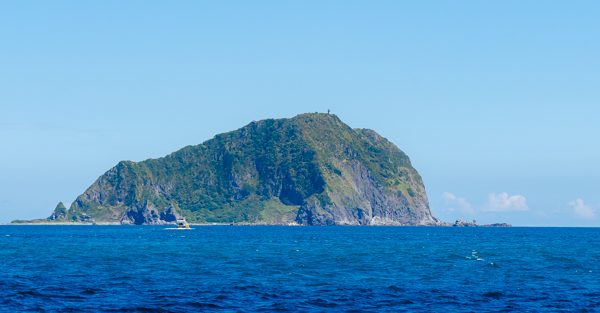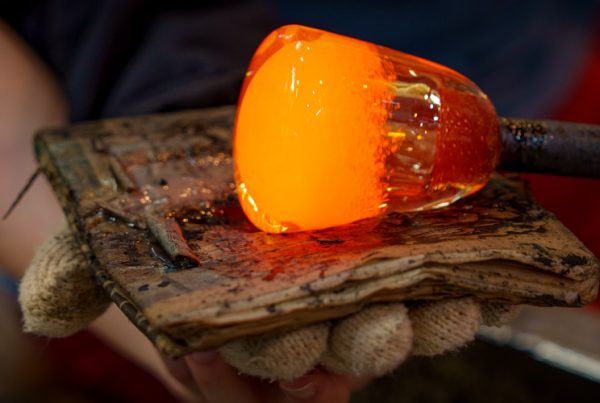A Tiny Island with Numerous Tourist Draws
TEXT | AMI BARNES
PHOTOS | RAY CHANG, VISION
The smaller of Kinmen County’s two main islands, Little Kinmen (or Lieyu) is a sleepy backwater unlikely to be high up on most people’s Taiwan travel itineraries. But do not write it off! Read on to learn about some of the enriching experiences that await visitors to this frontier chunk of land.
Home to around 13,000 people and a whole lot of cows, Little Kinmen is mostly known for its “wind chicken” guardian deities and melt-in-the-mouth taro. Previously, anyone planning to visit would have needed to catch a ferry from the main island, but the 5km-long Kinmen Bridge was officially opened in 2022, making it easier to pop over and explore at your own pace. And there’s certainly plenty to explore. Think subterranean tunnel networks, picturesquely aged villages, heritage enterprises, and refreshing local snacks – more than enough to merit allocating a day of your Kinmen adventure to this unique place.

Content
Tie Han Fort/Yongshi Fort
Barely 500m from the western end of Kinmen Bridge, the Tie Han Fort and Yongshi Fort duo are among the first structures you’ll come across when you arrive on Little Kinmen. Although listed separately on Google Maps, these forts are interconnected and their one-way foot flow means they can only be accessed via the Yongshi Fort side – not far from a popular restaurant serving all manner of taro-based treats. Admission is NT$30 for an adult – tickets can be bought at the entrance.

Entering, it’s immediately apparent why the one-way system has been implemented. A walkway – barely wide enough for two burly soldiers to squeeze past each other – sinks down into the depths of the earth. As the tunnel begins to level out, it also widens, and the remainder of it is occupied by an exhibition dedicated to the horrors of landmines. When amphibious landings were a real threat, minefields littered Kinmen’s coastline, with over 100,000 individual mines placed as a deterrent. Bilingual exhibits detail the painstaking, treacherous, and ultimately successful demining efforts.


To leave the tunnel, you have to walk through a simulated minefield. Gravel crunches underfoot and motion sensors trigger an onslaught of flashing lights and the sound of explosions. It’s unpleasant, but thankfully, it’s the closest any visitor to present-day Kinmen will get to experiencing a landmine.


As mentioned earlier, before Kinmen Bridge opened the only way to get to Little Kinmen was by ferry. Once every 30min the boat from Shuitou Pier would dock, disgorging its cargo of scooters, cars, and foot passengers at Jiugong Pier. It makes sense then, that as the jumping-off point for exploring Little Kinmen, the island’s main visitor center would be situated here.
Jiugong Tunnels/Lieyu Visitor Center
From the pier, a short wander along a waterside path will take you to the Jiugong Tunnels and Lieyu Visitor Center. The entrance is marked with another of Kinmen’s many repurposed military facilities – in this instance, a field hospital enjoying a second life as a toilet block. As with the better-known Zhaishan Tunnel on Kinmen’s main island, the subterranean network at Jiugong was built by Chiang Kai-shek’s army in the wake of the 823 Artillery Bombardment in 1958 – a significant military event that kicked off the Second Taiwan Strait Crisis. Construction began in 1963, with soldiers laboring to carve interlinking boat and pedestrian tunnels out of the granite bedrock using little more than jackhammers and brawn.


The tunnels were designed to facilitate the safe delivery of food and military provisions to the island, and could also be pressed into use as an overflow ward for the hospital if its small complement of beds was full. These days, the pedestrian tunnels are filled with illuminated exhibits introducing the history of the site as well as some of the cultural, ecological, and military scenes from around the island, while the main boat tunnel has been kitted out with lights and a walkway allowing for easy exploration. There are multiple ingress and egress points, and if time permits, you could exit via the Luocuo Village side and stroll back to the pier along the coastal boulevard.



Shaxi Fort
Shaxi Fort sits on a protuberance jutting out into the waters at the westernmost limit of Little Kinmen. Built in the 1970s by the ROC Army’s Tiger Battalion, descending below ground here is a more claustrophobic experience than any of the other tunnels mentioned previously. The 140m-long main tunnel is tolerable – if narrow – but the shoulder-width offshoots fanning out to low-ceilinged bunkers are decidedly tight. (As with the Yongshi and Tie Han forts, an NT$30 entry fee is charged.)


Those who brave the squeeze will be greeted by a blue ceramic figurine of what at first appears to be a troglodytic wind lion god (see page 30). A closer look, however, reveals it to be not a lion at all, but a fierce tiger. This is Master Tiger, the tutelary deity of the Tiger Battalion. A puddle of NT$10 coins is spilled out in front of the figure – tokens from visitors hoping for peace and protection. Deeper in, concrete gun emplacements frame sections of the scenery beyond, the sound of the water slapping against the rocks below loud enough to drown out any footsteps in the passageways behind you.

Above ground, a raised wooden walkway snakes over the rocky promontory, terminating at a viewing pavilion facing China. In the bizarrely near distance, Xiamen’s skyscrapers rise from the waters, easily seen with the naked eye, and on the day of our visit towering cumulonimbus clouds massed over the land, mirroring the buildings’ skyward reach. Binoculars bring the port city even closer, and if you know where to look you might even spot Xiamen’s propaganda wall upon which the slogan “ One Country, Two Systems, A United China” is picked out in huge red Chinese characters – a foil to a similar Taiwanese installation on minuscule Dadan Island (southwest of Lieyu).


Other Places of Interest
Huanan Soda Factory
“Luxury Drink,” proclaims the text on bottles of soda from Huanan Soda Factory, located in tiny Donglin Village. Today, the claim that these thirst-quenching sarsaparilla-flavored beverages served in repurposed rice wine bottles are a luxury seems a little bold, but when the factory opened in the late 1960s, one bottle cost the equivalent of three whole cabbages, putting them beyond the reach of most locals. Consequently, the majority of the factory’s customers were soldiers burning through salaries paid in the form of “for use in Kinmen only” banknotes. The factory did a roaring trade, being the only soda producer on islands that housed troops numbering 100,000-odd, but eventually, cheap imported drinks and increasingly salinized groundwater drove them out of business.



Abandoned for over 40 years, the factory reopened in 2020 as a hybrid factory, museum, and café. Currently, visitors can choose from five flavors: sarsaparilla, Kaoliang liquor, lemon, smoked plum, and mulberry – the last four of which are made using local ingredients and without artificial flavorings. And for visitors who want a unique – if perishable – souvenir from their trip, there is the option to enjoy a DIY bottling activity. The bottles used for this are the very same recycled (and sterilized) rice wine bottles that were used back in the ’60s, and for extra authenticity, you get to seal shut your hand-mixed soda with one of the dwindling stock of bottle caps that were left when the factory originally shut its doors.


Huanan Soda Factory
(華南汽水廠)
Add: No. 81-2, Donglin, Lieyu Township, Kinmen County)
(金門縣烈嶼鄉東林81-2號)
Tel: 0985-117-107
Jianianhua Ice Shop
Just as in Donglin, the fortunes of neighboring Xifang have ebbed and flowed with the number of soldiers stationed in Kinmen. Today, only traces of its former glory years can be found in the fading hand-painted store signs. Jianianhua Ice Shop is one of a clutch of businesses that have moved in to enliven the sleepy settlement.


The menu predominantly features traditional flavors such as taro or peanut – both of which grow well in Kinmen’s sandy soil – alongside a few more contemporary offerings like milk tea. The firm favorite amongst our Travel in Taiwan team was the honey-taro ice, which comes slathered in a layer of sweetened taro paste along with a scoop of red beans and chewy sweet potato balls and topped with a milk pudding.

We also tried a Little Kinmen specialty, bucket pastries in milk. “Bucket pastries” are small pastries made with sesame and green onion; the somewhat unappealing name is thought to have come about because they were previously stored in buckets to preserve freshness. The combination of sweet and salty might come as jarring to a Western palate, but it’s certainly something you’re unlikely to find anywhere else in the world.

Jianianhua Ice Shop
(嘉年華冰菓室)
Add: No. 19, Xifang Community, Lieyu Township, Kinmen County)
(金門縣烈嶼鄉西方社區19號)
Tel: (082) 363-126
Yuanxing Store
Although Little Kinmen boasts a grand total of two 7-Elevens and one FamilyMart, every single small community has its own mom-and-pop convenience store selling basic necessities, and a trinket or two for stray tourists. In the island’s westernmost settlement of Qingqi, that role is filled by Yuanxing Store. Located in a residential building set back from the road, walking inside it feels a little like stepping back in time. A TV plays Taiwanese historical soap operas, and shelves are stacked with lightly dusted boxes of Kaoliang. The only incongruity is a table of handmade cakes and cookies, made – as the proud store owner tells us – by her daughter, who has a café “under the tall tree over there.” Sure enough, a short amble through the houses brought us to the old village chief’s office, now a café – the perfect spot to dodge the heat as you figure out your next adventure.




Yuanxing Store
(源興興商行)
Add: No. 41, Qingqi Village, Lieyu Township, Kinmen County
(金門縣烈嶼鄉青岐村41號)
Tel: (082) 362-255







